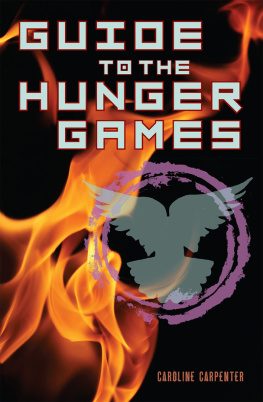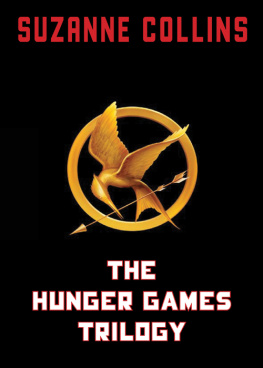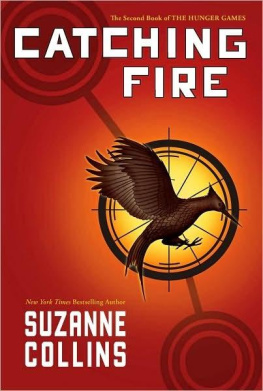Contents

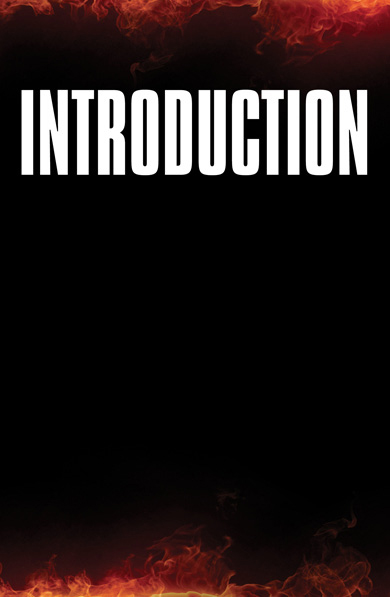
Y ou know this world, where its easy to get confused between reality and reality TV.
You know this place, where rich and poor live side by side but worlds apart.
You, too, might question the choices a government makes on your behalf.
You, too, have seen the environment abused, damaged beyond repair.
This place is Panem, the world of The Hunger Games.
But it has roots in a world you know already: your own.
Its not that hard to imagine a path from here to there. Thats part of what makes Suzanne Collinss trilogy so mesmerizing. Drawing on Roman history, Greek mythology, war stories, and her long experience as a scriptwriter and storyteller, Collins has created a dystopian world that feels at once foreign and unsettling yet familiar.
Now filmmakers have brought Collinss world to life in all its color and complexity.
If youre trying to get oriented or if you already know the way let this book be your guide to the world of The Hunger Games.
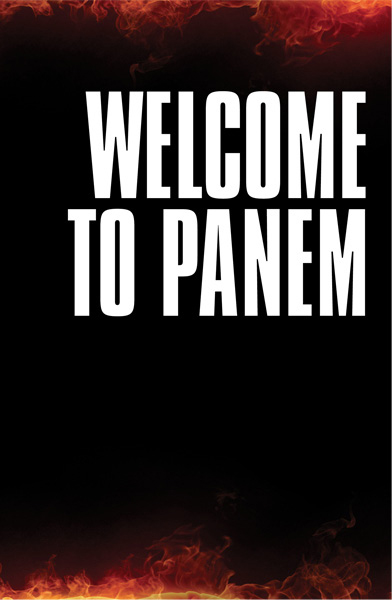

L ong ago, this place was known as North America. That was before the droughts and the disasters, the storms and the fires, the floods and the war. That was before a powerful new force rose from the ashes to create order and rule with an iron hand.
Now this place is called Panem. It consists of twelve districts surrounding one shining Capitol.

The Capitol is Panems seat of power and its largest city. Nestled in a mountain range once called the Rockies, it towers above the districts and is accessible only through long tunnels. The mountains protect the Capitol from intruders and insulate it from the districts.
The districts contain sparkling waters, lush forests, majestic mountains and miserable people. These people fish those waters, fell those forests, and mine those mountains, all to meet the Capitols needs. But there is no feast quite big enough, no fashion quite new enough for the Capitol. The people of the districts give their labor they give their lives all to feed the Capitols insatiable appetites. Meanwhile, people are starving.
Some districts are favored by the Capitol: those that produce weapons and luxury goods. There, at least, the people have enough to eat. But even they have no opportunity beyond what the Capitol dictates.
Under such conditions, you might expect a revolution.
Thats been tried before. During the Dark Days, the districts attempted rebellion. All were defeated, and one District 13 was destroyed. Now its a smoldering ruin, a reminder of what happens to those who defy the Capitol.
The annual Hunger Games are another reminder. Every year, each district sends two tributes, a boy and a girl, to compete in a fight to the death on live TV. The message is clear. In retribution for the long-ago rebellion, the Capitol will take whatever it wants from the people of the districts. Even the lives of their children.
The victor of the Hunger Games receives riches for life. His or her district is showered with gifts. Really, though, the Capitol is always the true winner.
Panem is a place of nightmares, but its also a place we can understand, with its intractable injustices and its fine line between reality and reality as created for a broadcast. Its like the world as we know it gone terribly wrong.
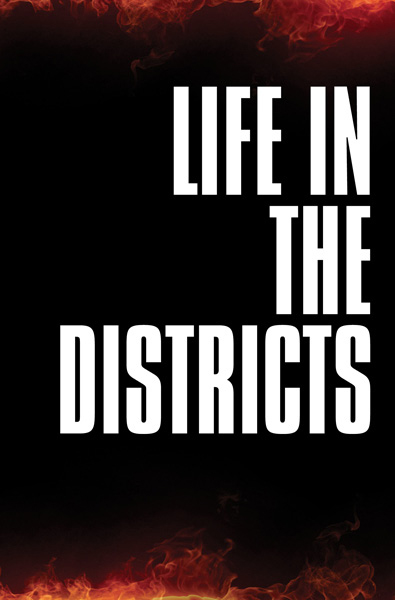
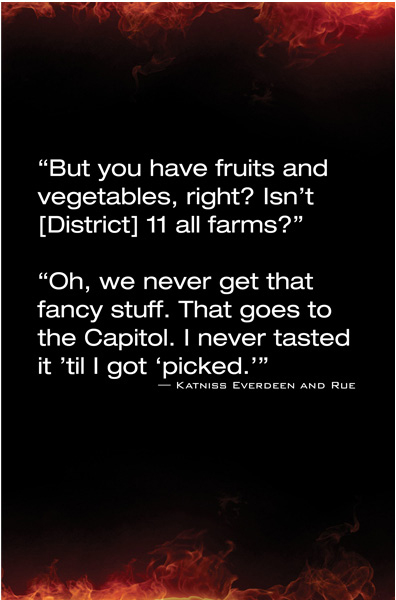
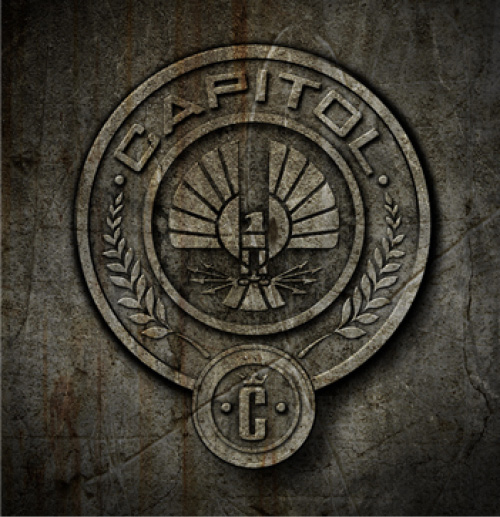
T he districts of Panem share borders and waterways, a language and a government, but theyre completely isolated from one another. Fences surround each district. Cargo trains traverse the country carrying goods, but the distribution of goods is all controlled by the Capitol.
Most people never leave their home districts. The Capitol makes sure of that.
So though they share a language, communication between districts is difficult and dangerous. As a result, each district has developed distinct customs of its own. In District 12, for instance, its a sign of respect to the dead to touch three fingers to your lips and then release them. In other districts, local customs are closely tied to whatever the assigned industry is.
Most of what the districts know about one another comes from the annual broadcast of the Hunger Games. Viewers see glimpses of other town squares during the reapings. They learn a little about the habits of the other districts as they watch the tributes in the arena.
The Hunger Games are what passes for shared history among the people of Panem. One district will know nothing about the living conditions or latest news in the adjoining district, but people in both will remember the year the arena was a frozen tundra, or the year seventeen tributes died on the first day.
Thats because everybody everywhere is required to watch the Games.
Each district is dedicated to a particular industry, a particular task for the Capitol. Some districts make goods that are in great demand in the city. Other districts deliver raw materials or food.
While the districts produce things, the Capitol consumes them as fast as it can. Fads come and go quickly in the Capitol its the districts job to create whatever the Capitol wants at any given moment. The people of the Capitol have never known hunger. They dont know about recycling, or care about sustainability. They want whats new and whats easy, whatever the cost to the districts.
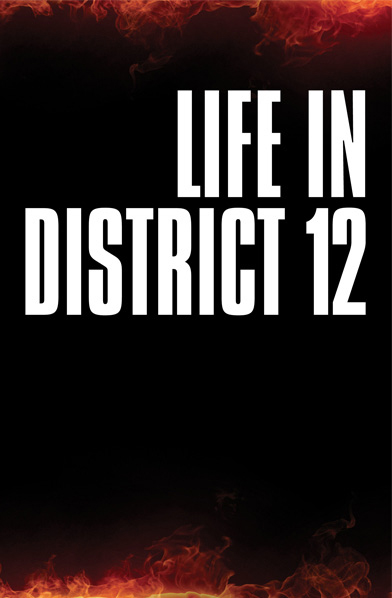
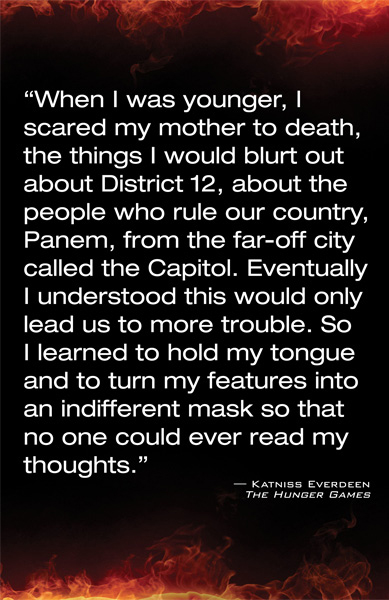
D istrict 12 is Panems mining center, in a place that used to be called Appalachia. It is the poorest, least populated district and the home of Katniss Everdeen, the female tribute in the Seventy-fourth annual Hunger Games.
In District 12, the miners leave before sunrise to descend deep into the earth. They return after nightfall, if they return at all. Mine explosions, like the one that killed Katnisss father, are common. At least once a year, though, the miners know they will see daylight. Thats on the day of the reaping, when the tributes for the Hunger Games are chosen.
Most days, though, the miners return after dark to their houses in a scruffy neighborhood called the Seam, pushed to the edge of town. The districts few merchants live closer to the center of town, set apart from the very poor. Even within the district, there is tension between the haves and the have-nots.




